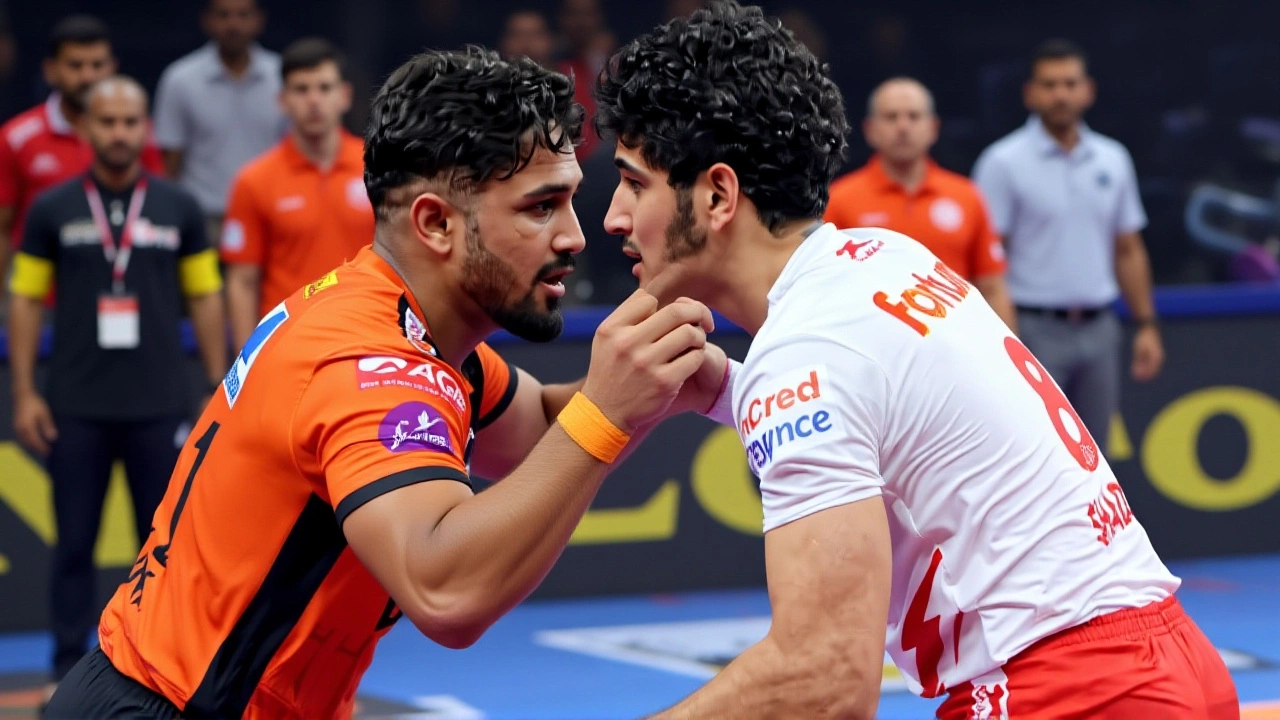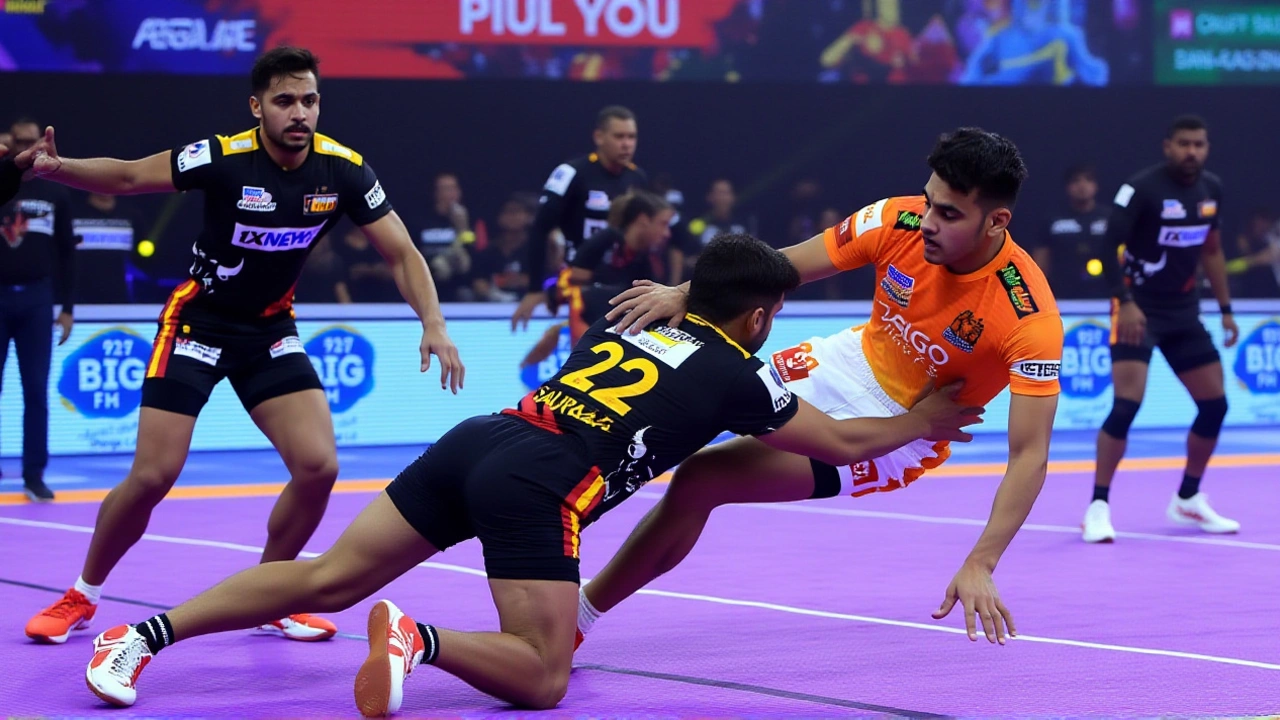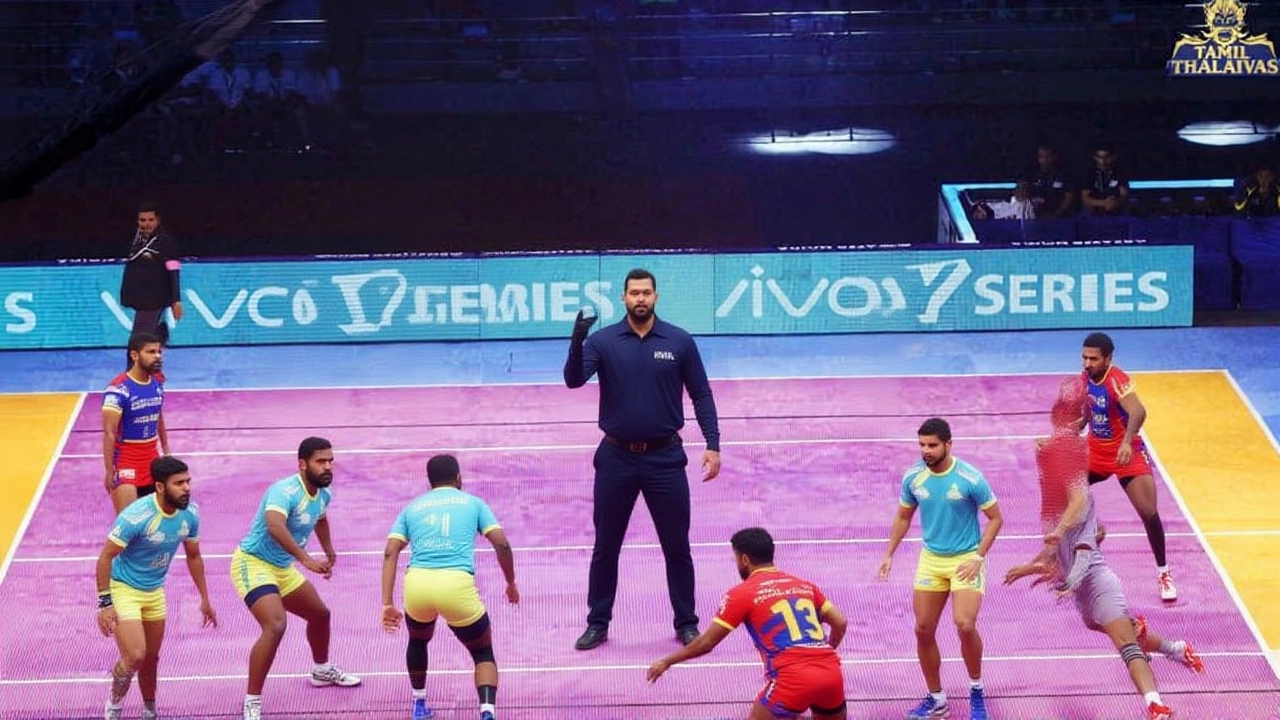On December 25, 2018 at 8:00 PM IST, the Tamil Thalaivas took on the Haryana Steelers in a dead‑rubber clash at the Netaji Subhash Chandra Bose Indoor Stadium in Kolkata, West Bengal. The match was part of the VIVO Pro Kabaddi League 2018 (Season 6), a tournament that wrapped up on December 31, 2018. Both squads entered the arena with the season already written off – Tamil Thalaivas had been languishing near the bottom of Zone A while the Haryana Steelers sat just outside the playoff cut‑off in Zone B. As India Today put it, it was “a tame affair with nothing really at stake.”
Season Overview and What Was at Stake
Before the Kolkata showdown, the league had seen 12 teams jostle for six playoff berths in each zone. Zone A featured the Thalaivas, Jaipur Pink Panthers, Bengal Warriors and others; Zone B housed the Steelers, UP Yoddha, Telugu Titans, etc. By the time the calendar flipped to December, the Bengal Warriors had secured a spot, while the Telugu Titans were hanging on a thread. The Thalaivas, despite a few neck‑and‑neck moments, were effectively out after a 33‑37 loss to Dabang Delhi on November 30, a match in which they were reduced to six players after two fouls.
Haryana, on the other hand, had barely missed the cut, falling 29‑30 to UP Yoddha on December 23. The narrow defeat left them “almost out from the play‑off race,” according to The Indian Express. With just three matches left in the regular season, the Steelers were fighting for pride more than points.
Match Details and Key Moments
The arena was packed with roughly 6,200 fans – a mid‑range figure for PKL, where attendance typically swings between 5,000 and 8,000. Tickets ranged from ₹200 in the upper tier to ₹2,500 for the premium court‑side seats. The first half was a low‑scoring affair, ending 12‑10 in favor of the Steelers. A turning point arrived in the 14th raid when Ajay Thakur, captain of the Thalaivas, attempted a “brain fade” but mistimed his entry, handing the Steelers a crucial extra point – a moment later highlighted in a YouTube clip titled “Ajay Thakur Brain Fade Costs Thalaivas.”
The second half saw Haryana extend their lead to 24‑15 before the Thalaivas rallied with a couple of successful tackles from Manjeet Chillar. Yet the momentum never fully shifted. The final whistle blew at 31‑22; the Steelers walked away with a modest victory, but the result barely nudged the league table.
- Final Score: Haryana Steelers 31, Tamil Thalaivas 22
- Top Raider: Ravinder Pahal (Haryana) – 9 points
- Top Defender: Manjeet Chillar (Tamil) – 4 tackles
- Attendance: ~6,200 spectators
- Broadcast Reach: Estimated 400 million viewers across TV and digital platforms
Player Spotlights
Ajay Thakur, the veteran raider and Thalaivas’ skipper, finished the season with 93 raid points, ranking him among the top five raiders league‑wide. Despite the mis‑step in Kolkata, his experience remained a guiding force for the younger lads like Sukesh Hegde, who posted a respectable 18 points in the match.
For the Steelers, the breakout star was Ravinder Pahal. The 24‑year‑old’s 9‑point haul included two spectacular super‑raids that swung the momentum. Coach Ravinder Singh praised his work ethic, saying, “Ravinder’s timing is sharper than ever; he knows when to bite and when to hold back.”

Broadcast, Streaming and Viewership
The match aired live on Star Sports 2 and Star Sports HD, part of the Star India network. Digital fans could stream the game on Disney+ Hotstar and Jio TV. According to a Times Now report, the combined TV‑plus‑digital footprint for the match crossed 12 million impressions within the first hour, adding to the league’s overall estimate of 400 million viewers for the season.
The broadcast package, secured by Star India, also included a dedicated commentary team, on‑screen analytics, and a “fan‑zone” segment that let viewers vote for the best raid of the day. This interactivity helped the PKL maintain its status as one of India’s most engaging sports properties.
Implications for Teams and the League
For the Thalaivas, the loss cemented a disappointing sixth‑place finish in Zone A. Management, led by CEO Vijay Kumar, announced a review of the squad ahead of the 2019 draft, hinting at potential swaps for a more balanced mix of raiders and defenders.
The Steelers, while still out of the playoffs, used the victory to showcase their depth. Analyst Rahul Bhatia of Sportskeeda wrote, “Haryana’s resilience in a dead‑rubber match indicates a strong culture; they’ll be a dark horse if they can retain their core players.”
On a macro level, the match underscored the PKL’s growing commercial clout. Sponsorship from VIVO Electronics Corporation, which lent its name to the league, continued to pour in over ₹120 crore for the season, a figure that dwarfs the league’s early‑years budgets. The success of the digital streaming model also convinced advertisers to allocate larger portions of their media spend to the PKL’s online inventory.

Historical Context – Kabaddi’s Rise to Prime‑Time
When the inaugural PKL launched in 2014, matches were confined to modest indoor venues with limited TV coverage. Fast‑forward to 2018, and the league spanned eleven cities, featured 12 franchises, and attracted star power comparable to the Indian Premier League. The 2018 season, organized by Mashal Sports in partnership with Star India, marked the midpoint of that evolution. The Kolkata finale on December 31, 2018, where Bengaluru Bulldogs clinched the title, capped off a season that saw average stadium occupancies rise by 15 % over the previous year.
Yet the sport’s grassroots remain vital. The Amateur Kabaddi Federation of India (AKFI) and the International Kabaddi Federation (IKF) continue to work on standardizing rules and expanding youth academies. The PKL’s visibility, even in a low‑stakes match like the Thalaivas‑Steelers clash, feeds that pipeline, inspiring the next generation of raiders and defenders.
What’s Next for the Teams?
Both franchises will head into the 2019 pre‑season with different agendas. The Thalaivas have already filed a player‑retention list, eyeing a high‑profile acquisition in the upcoming auction. The Steelers, meanwhile, are expected to retain a core of five players and focus on strengthening their bench depth. Fans can look forward to the next season’s curtain‑raiser on September 28, 2019, at the Greater Noida Sports Complex.
Frequently Asked Questions
How many points did the top scorer achieve in the Tamil Thalaivas vs Haryana Steelers match?
Ravinder Pahal of the Haryana Steelers led the scoring with nine raid points, outpacing the next highest scorer by two points.
Why was the match considered a 'dead‑rubber' for both teams?
Both the Tamil Thalaivas and Haryana Steelers were already out of playoff contention – the Thalaivas after a 33‑37 loss to Dabang Delhi and the Steelers following a narrow 29‑30 defeat to UP Yoddha – leaving the December 25 fixture without any impact on the league standings.
Which platforms streamed the 2018 PKL match live?
The game was broadcast on Star Sports 2 and Star Sports HD, and streamed simultaneously on Disney+ Hotstar and Jio TV, reaching both television and digital audiences.
What was the attendance at the Netaji Subhash Chandra Bose Indoor Stadium for this match?
Approximately 6,200 spectators filled the venue, placing the figure in the middle of the typical 5,000‑8,000 range for PKL games that season.
What impact does a dead‑rubber match have on team strategy?
Coaches often use the game to test bench players, experiment with new raid formations, and evaluate younger talent ahead of the next season’s auction, as the result won’t affect playoff qualification.



